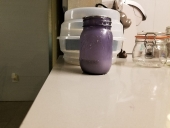
 8
8




Visit Redhawk's soil series: https://permies.com/wiki/redhawk-soil
How permies.com works: https://permies.com/wiki/34193/permies-works-links-threads

 4
4




Jay Angler wrote:I really like celeriac. It is so yummy in winter stews and soups as it gives a nice texture and background flavor without having to add thickeners like flour or cream which is on my "avoid because of lactose" list.
My first struggle is with any seeds that take 2 to3 weeks to germinate. Does anyone have hints on how to keep that to the short end of the range? Would bottom heat help? That's definitely an area I struggle with, as our house is pretty cool in the winter.
My second struggle is that my ecosystem has a summer drought and this plant prefers reliably moist, rich soil. Has anyone tried growing it in a wicking bed? I've been thinking about building a wicking bed, and this might be the motivation!
Lastly, is it worth the effort? Nutritionally, celeriac has lots of fiber and vitamins B6, C and K. However, they seem to be higher if eaten raw, and I've only had celeriac cooked. Can anyone give me ideas of how they would eat it raw?
If nothing else, I'm the sort of person who gets a bit bored with the same food over and over. If I can figure out an easier way to successfully grow this crop, it would add a little diversity in the veggie department!
Live, love life holistically
 2
2




 3
3




 4
4




 3
3




WARNING permaculture is highly addictive, it may cause life altering changes such as valuing people, community and resources, and promote respect, learning, support and kindness .
 5
5





|
If you are using a wood chipper, you are doing it wrong. Even on this tiny ad:
Learn Permaculture through a little hard work
https://wheaton-labs.com/bootcamp
|



